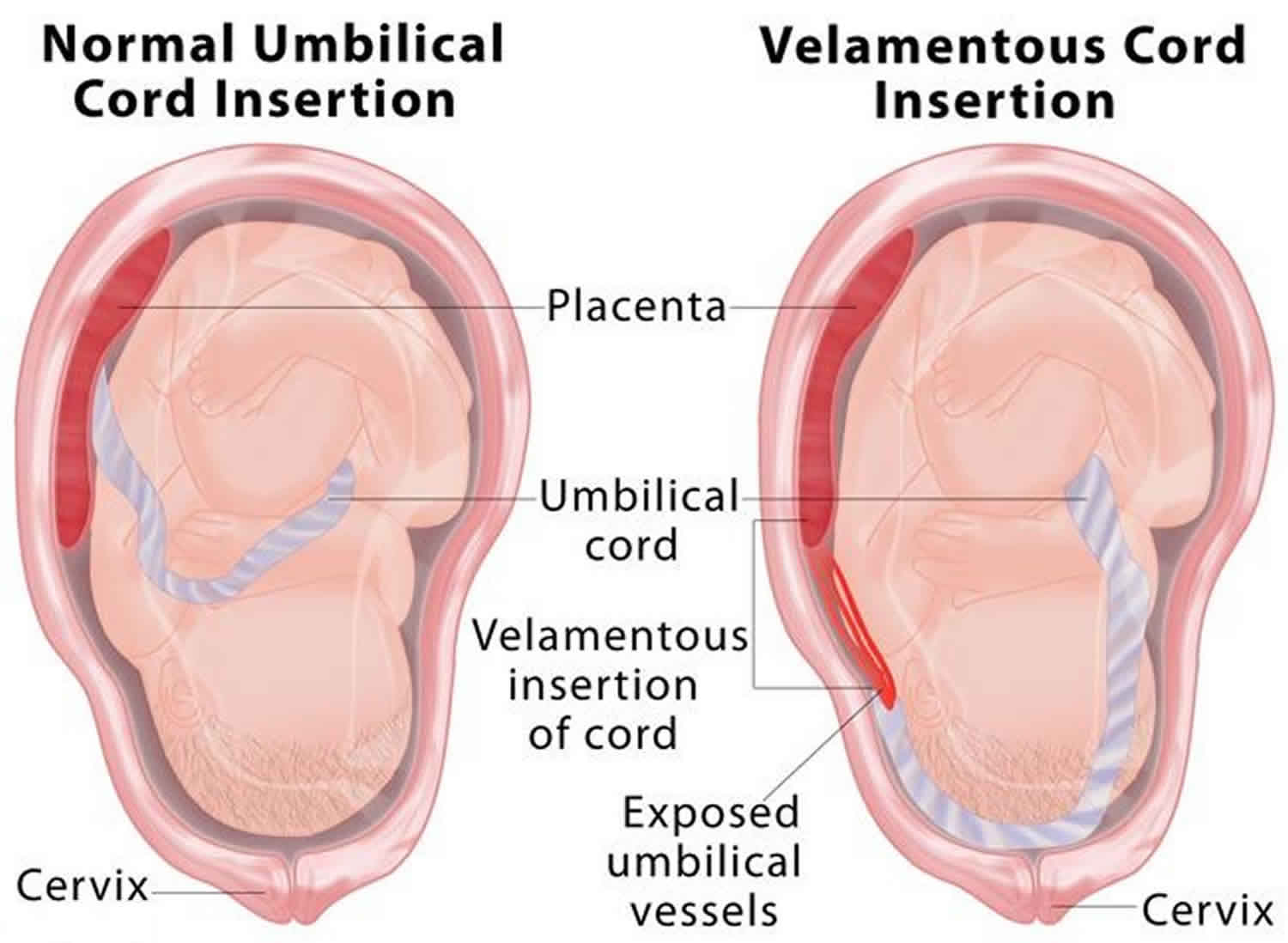Velamentous Cord Insertion
In the intricate journey of pregnancy, there exists a condition that demands our attention: Velamentous Cord Insertion. While it may not be a household term, this condition can have profound implications for both the mother and the developing fetus. In this comprehensive guide, we will unravel the mysteries of velamentous cord insertion, exploring its significance, causes, and the importance of early detection.
Understanding the Umbilical Cord
Before we dive into the complexities of velamentous cord insertion, let’s first grasp the fundamental role of the umbilical cord in pregnancy. This lifeline connects the fetus to the mother, delivering oxygen and nutrients crucial for development. Typically, the cord inserts directly into the placenta, ensuring a secure connection. However, in cases of velamentous cord insertion, this process takes an unexpected turn.

What Causes Velamentous Cord Insertion?
The emergence of velamentous cord insertion often leaves expectant parents with questions. What causes this condition, and why does it deviate from the norm? While the exact causes remain elusive, certain factors are associated with a higher risk of velamentous cord insertion.
Symptoms and Diagnosis
Detecting velamentous cord insertion is a pivotal aspect of prenatal care. Recognizing the subtle signs and symptoms can make all the difference in ensuring a safe pregnancy. Here are some indicators that may raise suspicion:
Vaginal Bleeding:
Occasional or persistent bleeding can be a sign.
Abnormal Fetal Heart Rate:
Monitoring the baby’s heart rate during prenatal visits may reveal irregularities.
Reduced Fetal Movement:
Decreased or erratic fetal movements may warrant investigation.
Preterm Labor:
Velamentous cord insertion is associated with an increased risk of preterm birth.
Risks and Complications
Velamentous cord insertion introduces a level of complexity into the pregnancy that necessitates vigilance. Understanding the potential risks and complications is essential for expectant parents:
Fetal Growth Restriction:
Reduced blood flow through the velamentous vessels can impede fetal growth.
Preterm Birth:
The risk of preterm labor is elevated, which can lead to neonatal health concerns.
Placental Abruption:
In rare cases, the velamentous vessels may rupture, causing placental abruption and serious bleeding.
C-Section Consideration:
Due to the elevated risks, healthcare providers may recommend a cesarean section (C-section) to ensure a safer delivery.
Treatment and Management
The management of velamentous cord insertion involves a multidisciplinary approach, with close collaboration between the obstetrician, maternal-fetal medicine specialist, and neonatal care team. Treatment strategies may include:
Close Monitoring:
Regular prenatal check-ups and fetal monitoring to track the baby’s growth and well-being.
Bed Rest:
In some cases, bed rest may be recommended to reduce physical stress and pressure on the placenta.
Scheduled Delivery:
Depending on the severity of the condition and other factors, healthcare providers may opt for a scheduled cesarean section (C-section) to ensure a controlled delivery environment.
Real-Life Experiences
The journey through pregnancy, especially one marked by velamentous cord insertion, can be filled with uncertainty and anxiety. In this section, we share the real-life experiences of individuals and families who have navigated this challenging path.
These personal stories offer support, encouragement, and insights into coping with the condition. By sharing experiences, we aim to provide a sense of community and reassurance to those facing similar challenges.
Preventive Measures
While velamentous cord insertion may not always be preventable, certain measures can promote a healthier pregnancy:
Regular Prenatal Care:
Attend all scheduled prenatal appointments to allow for early detection and monitoring.
Healthy Lifestyle:
Adopt a healthy lifestyle that includes proper nutrition, regular exercise, and avoidance of harmful substances like smoking.
Education:
Stay informed about pregnancy complications and ask questions during prenatal visits to address any concerns promptly.
By taking these preventive measures, expectant parents can maximize their chances of a safe and healthy pregnancy.
Frequently Asked Questions (FAQs)
1. What is velamentous cord insertion (VCI)?
Velamentous cord insertion is a condition where the umbilical cord inserts into the fetal membranes instead of directly into the placenta. This can pose certain risks during pregnancy.
2. How common is velamentous cord insertion?
VCI is relatively rare and occurs in approximately 1% of pregnancies. It is more common in pregnancies with multiples and in certain high-risk groups.
3. Are there symptoms associated with velamentous cord insertion?
Velamentous cord insertion may not have noticeable symptoms. It is often detected through prenatal ultrasound and Doppler studies.
4. What are the potential risks for the baby in cases of VCI?
Risks include restricted fetal growth, preterm birth, and potential oxygen and nutrient supply issues due to the vulnerable placement of the cord.
5. Can velamentous cord insertion be detected during routine prenatal care?
VCI is typically diagnosed through specialized ultrasound examinations, such as color Doppler imaging, which can identify the abnormal cord insertion.
6. Does VCI always require a cesarean section (C-section) delivery?
The mode of delivery depends on various factors, including the severity of VCI, gestational age, and the overall health of both mother and baby. Your healthcare provider will make the appropriate decision.
7. Is there anything that can be done to prevent velamentous cord insertion?
Unfortunately, VCI cannot be prevented. However, early and regular prenatal care can aid in early detection and management.
8. Are there long-term effects of velamentous cord insertion for the baby?
With appropriate prenatal care and timely intervention, most babies with VCI can have positive outcomes. Long-term effects are typically minimal.
9. Can VCI recur in future pregnancies?
While VCI can recur in subsequent pregnancies, it does not always happen. It’s important to discuss any previous history of VCI with your healthcare provider.
10. How can I cope with the anxiety of having VCI during pregnancy?
Coping with the anxiety of VCI can be challenging. Seeking emotional support, staying informed, and maintaining open communication with your healthcare team can help alleviate concerns.
Conclusion:
In conclusion, velamentous cord insertion is a condition that warrants attention and vigilance during pregnancy. Early detection, regular prenatal care, and a collaborative approach with healthcare providers are essential for managing the condition effectively.




